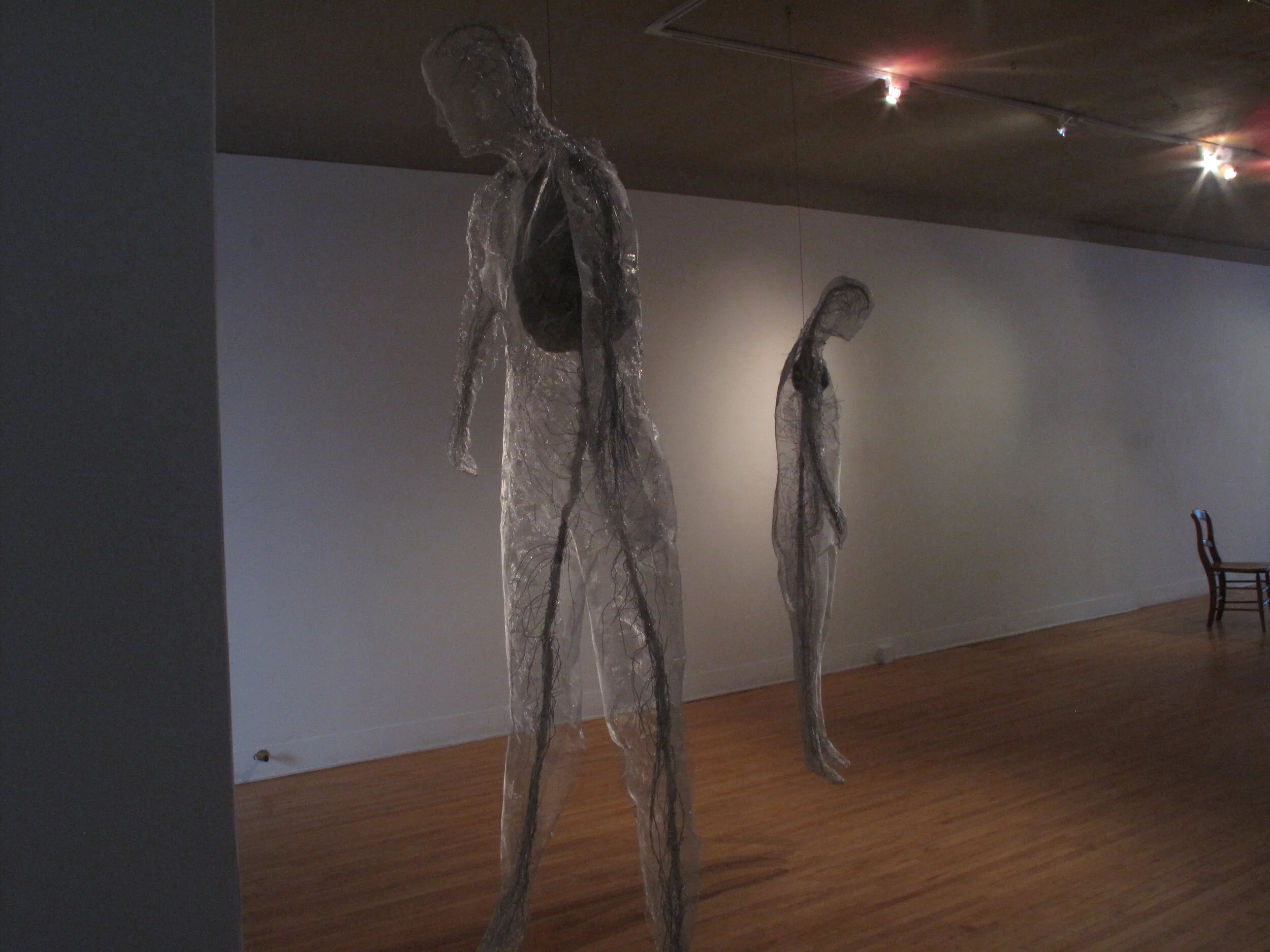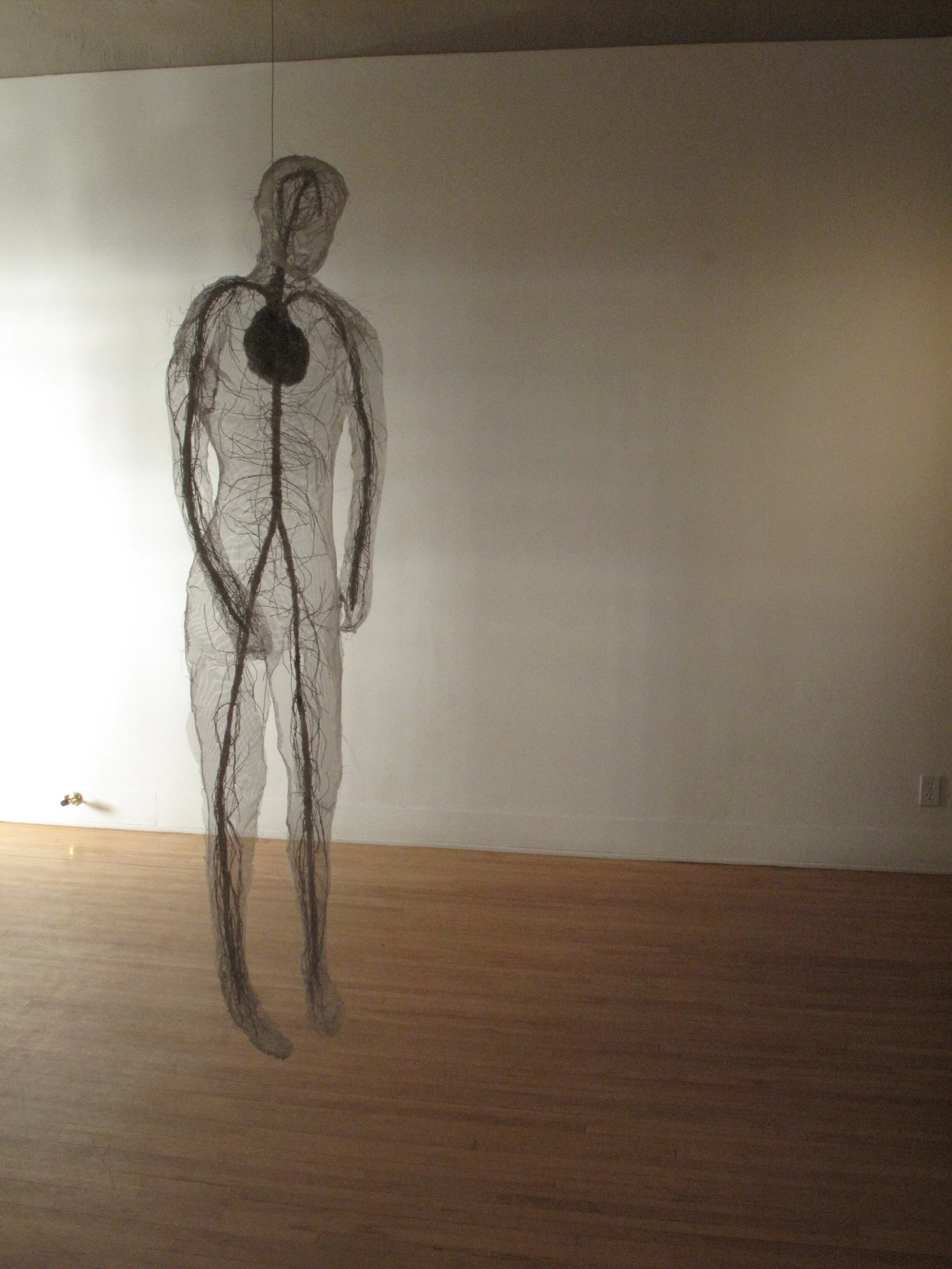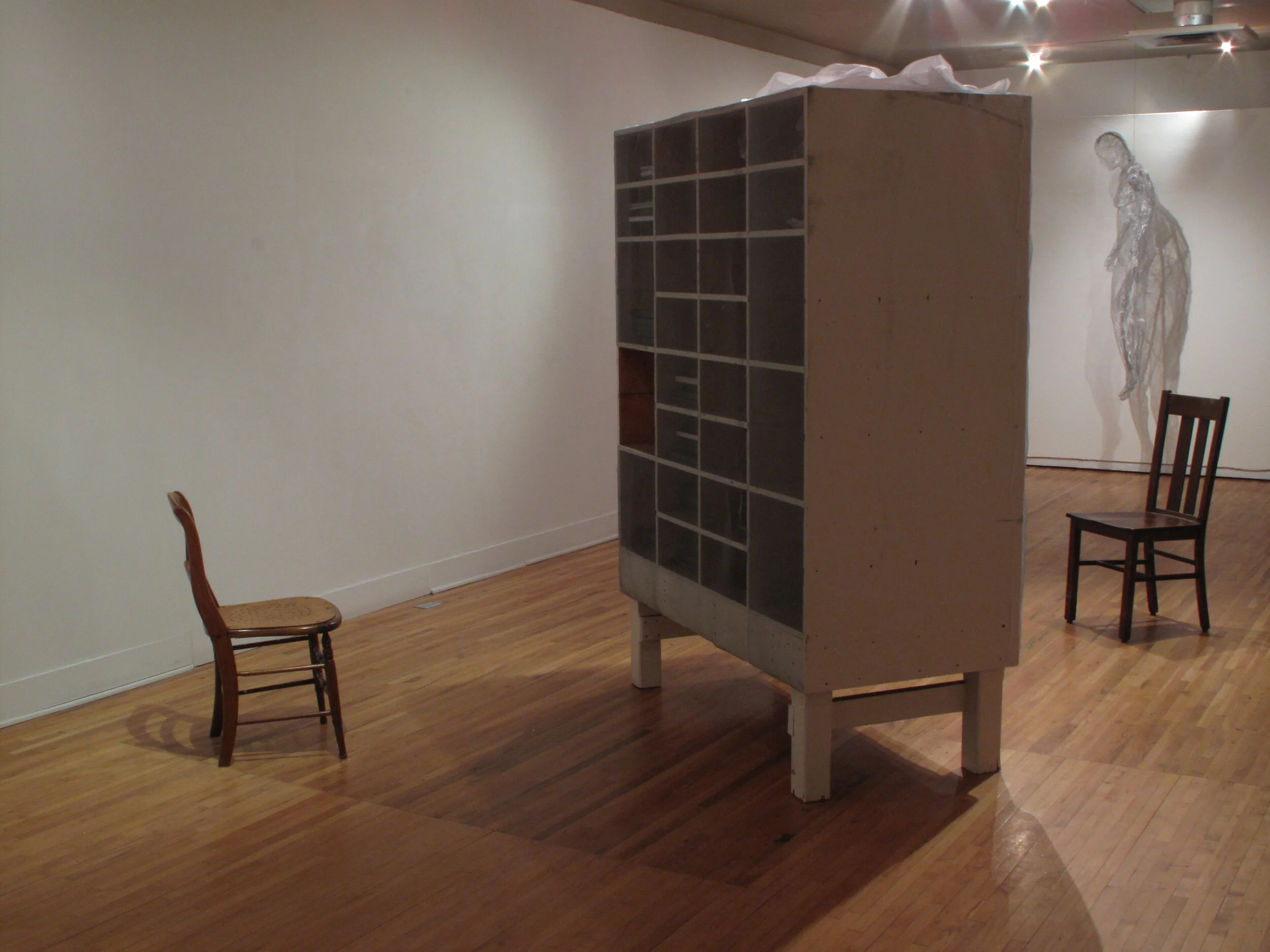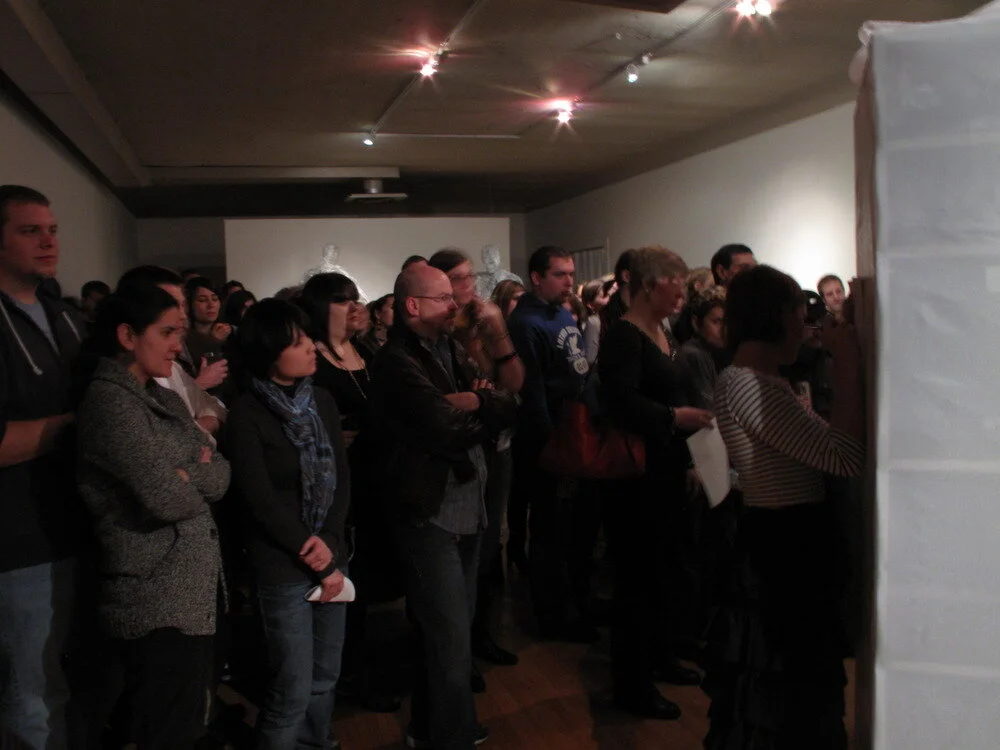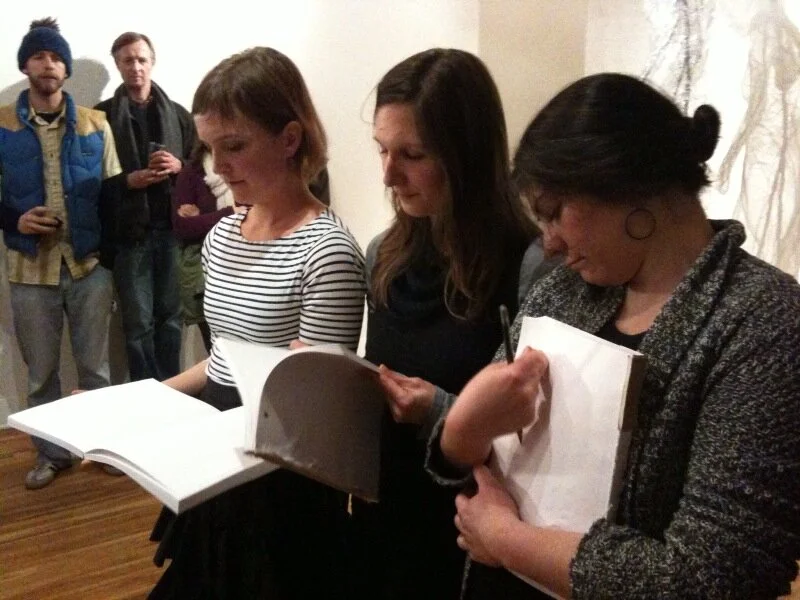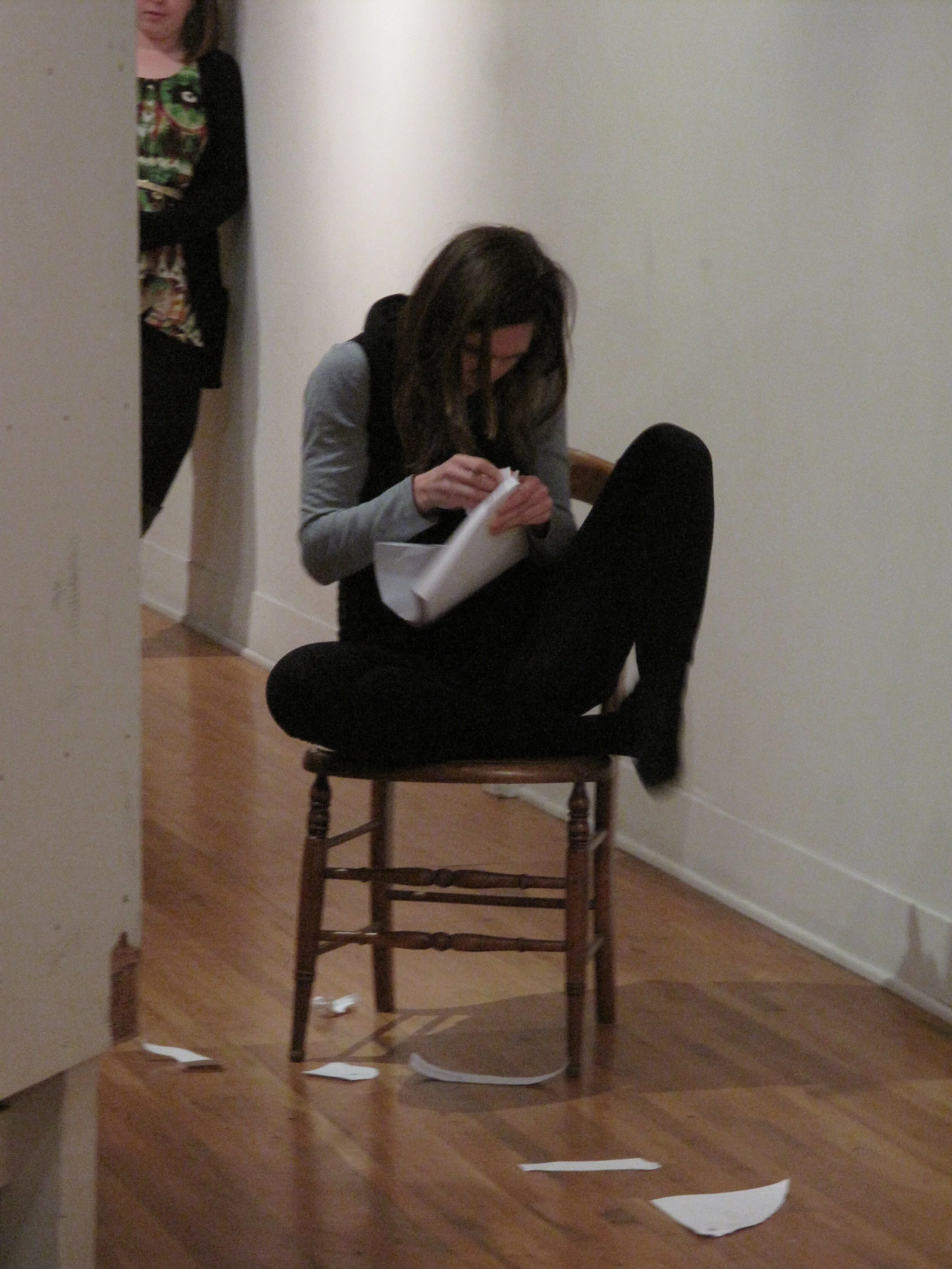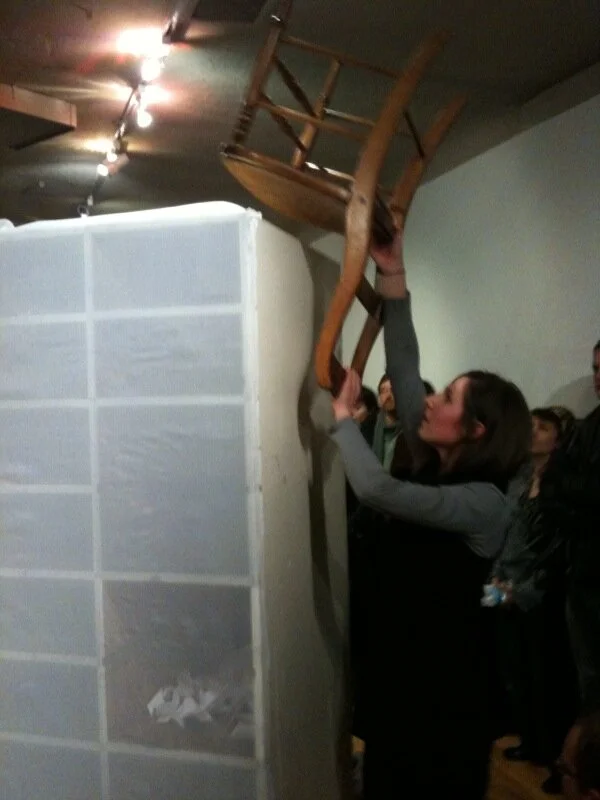Visitation
Rosalux Gallery, Minneapolis; ongoing public excursions
Visitation was a 2011 solo show, a performance, and the name of (ongoing) scheduled public excursions. In the gallery, Visitation was a sculptural installation that took over the entire space to explore themes of memory and repression. An immense old wooden cabinet was stuffed with black bound notebooks (Krinke’s journal-sketchbooks) and crumpled papers. The cabinet appeared to be completely shrouded in white translucent fabric; from the other side the notebooks are seen, but out of reach behind layers of screen. Three female figures made of screen and wire hover at the edges of the space, evoking qualities of insistent memories and emotions.
During the month long exhibition, Krinke organized weekly public excursions to places in Minneapolis-St. Paul that broadly related to definitions of "visitation". At each setting, she arranged for a volunteer to tell the group about their experiences and knowledge of the selected place. Not a lecture, "visitation" was a conversation and a way to see places and meet people one wouldn't normally connect with, for example, the “visitation” to St. Constantine Ukrainian Catholic Church, where Nina Mykulak discussed her experiences as one of the over two million Ukrainian men and women who were taken to Germany and forced to work as slave labor during WWII. As of March 2011, Visitation was an ongoing, often monthly, public excursion announced in advance.
Visitation performance created and performed by:
Anna Lawrence Bierbrauer, Paige Collette, and Amy Krautbauer.
The Visitation performance was designed and performed by Anna Lawrence Bierbrauer, Paige Collette, and Amy Krautbauer. They were invited by Krinke to create a piece that responded to the sculptural environment, and their wordless performance was held twice, to large crowds, in the gallery. Bierbrauer, Collette and Krautbauer interpreted the massive cabinet of journals as a repository of heightened emotion. A struggle with secrets and burdens emerged as the performance’s key theme.
Materials/dimensions: transformed found objects (cabinet, chairs), notebooks, paper, pencils, screen, metal mesh, wire, fabric, mixed media. Figures are life sized.

